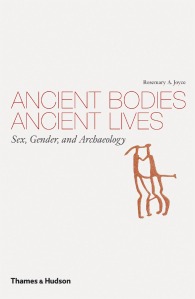I have spent a lot of time reading about new findings about Neanderthals over the past year.
Recently, I wrote about the coincidence of two studies published in July: one demonstrating genetic overlap between modern humans and Neanderthals (resulting from sexual relationships), the other proposing that Neanderthals were pushed out of their territory by an invasion of modern humans ten times the size of Neanderthal populations. Together, these seem to me to suggest a historical situation of tragedy.
I am not the only anthropologist noticing the media fascination with Neanderthal-human relations: Jason Antrosio, at Living Anthropologically, has two long and thoughtful posts, one about how burgeoning new research results are being absorbed into the existing picture without considering how we think about species and hybridity, another about how Neanderthal and modern human genetic overlaps have been represented in textbooks.
As Antrosio notes, before the recent surge in evidence showing significant genetic evidence of Neanderthal-modern human sexual relations, anthropologists were tempted to project interpretations of Neanderthal features far removed from sex as evidence that Neanderthals and modern humans would not have been attracted to each other. He quotes a 2007 publication saying
In particular, the very broad and short waist would have imparted a “stiffness” to Neanderthal movement that would have made them cut a very distinctive figure on the landscape. The consequent distinctive behavioral signal further reduces the probability that the two kinds of hominid would have shared any elements of a specific mate recognition system, and that any biologically significant level of gene exchange ever occurred between them.
Now, this scholarly paragraph led me to realize something that has been simmering under the surface in all the reading I have been doing. I have commented before on the media representation of presumed sexual conduct inferred for Neanderthals.
The coverage of studies that show some overlap between modern humans and the reconstructed Neanderthal genome consistently betrays a fascination with what the media sees as the unlikely, but now certain, sexual relationships these findings imply.
The media– and, as the quote reproduced above from Living Anthropologically shows, at least some academics– have a hard time imagining that ancestral modern humans would have found Neanderthals attractive. At the same time, they flirt with fantasies about hyper-sexy Neanderthals.
There is a fantasy of cross-species rape lurking here that is not far from Jean Auel’s story of Ayla, described as “blonde, blue-eyed, straight-legged, and vocal–considered bizarre and unattractive by her adoptive Clan”. Ayla is driven out by the Neanderthal Broud, “the brutal and proud youth who is destined to become their next leader sees her differences as a threat to his authority.” Ayla herself, of course, finds true love with others like her: “tall, handsome Jondalar, who brings her a language to speak and an awakening of love and desire”.
Love and desire.
Which, the popular books tell us, cannot exist across species lines, not between the Neanderthals and the modern humans who call them “Flatheads”.
Until we stop imagining Neanderthals as brutish louts with receding skulls and bow legs, incapable of communicating, and early modern humans as tall, blond, blue-eyed, and uniquely gifted in art and speech, we will never move the media narratives away from this imagery. The question is, can we change our own hidden assumptions enough to keep from reinforcing this species-serving dichotomy?


Jason Antrosio
August 7, 2011
Very interesting post, and thank you for the links! The 2007 publication is Ian Tattersall, “Neanderthals, Homo sapiens, and the question of species
in paleoanthropology.” it’s very interesting to read in light of the 2010-2011 findings.